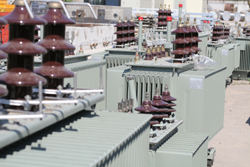T-helper response aids swine fever vaccine development
Classical swine fever (CSF) is an economically important infectious viral disease affecting domestic pigs and wild boars. Infected animals develop severe leukopaenia and immunosuppression accompanied by haemorrhagic lesions. As many as nine out of ten young pigs can die as a result of infection. The social and financial consequences of mass slaughter following a classical swine fever outbreak have directed research centres and authorities to reconsider the application of emergency vaccines. Consequently, there is great interest in developing and using marker vaccines for the control of CSF in domestic pigs and wild boar. Project partners at the Friedrich-Loeffler Institut, Federal Research Institute for Animal Health in Germany restimulated peripheral blood mononuclear cells (PBMCs) isolated from virus infected miniature pigs. These trials gave valuable data on the T-cell immune response. The scientists used two types of peptide - synthetic peptides previously identified as potential T-cell epitopes and peptides from the non-structural virus protein region. It was found that different peptides stimulated varying proportions of CD4+ and CD8+ T lymphocytes. For example, one peptide induced a response of almost exclusively CD8+ T cells. Enzyme-linked immunosorbent spot (ELISPOT) assays were used for a further subdivision of the peptide induced T cell response into Th1 or Th2 cytokine producing cells. The team found there was no relationship between the type of peptide stimulated cell and the final fraction of IFN-gamma (interferon-gamma) or IL-4 (interleukin-4) producing cells. Nearly all possible combinations were found ranging from almost exclusively IFN-gamma yielding cells to various mixtures of IFN-gamma and IL-4 producing T cells. Differences in cytokine response as a result of antigen stimulation can be applied to aid the development of novel effective vaccines. Moreover, data on different peptides can be used as a basis for multi-peptide vaccines as a strategy for increasing the breadth of the vaccine-induced response.



